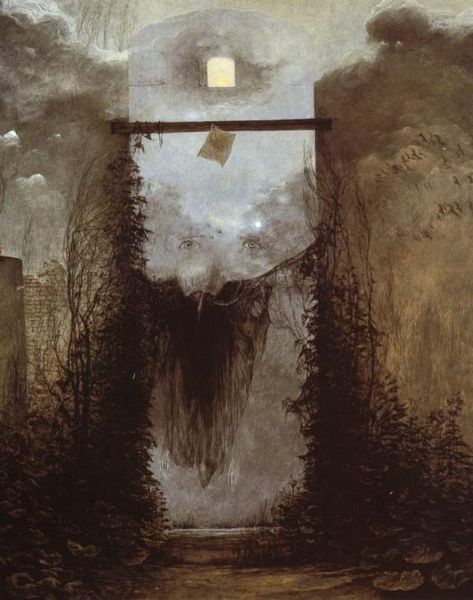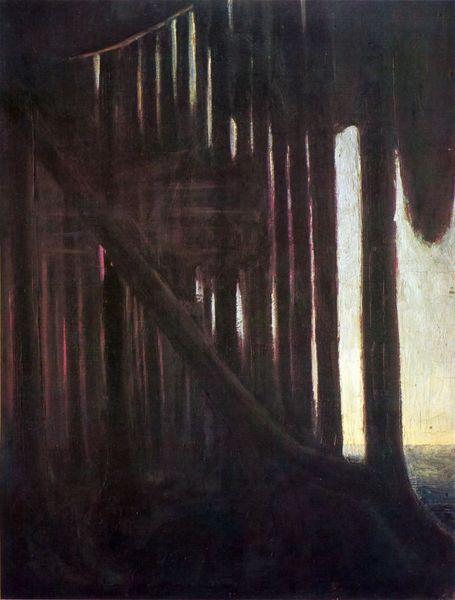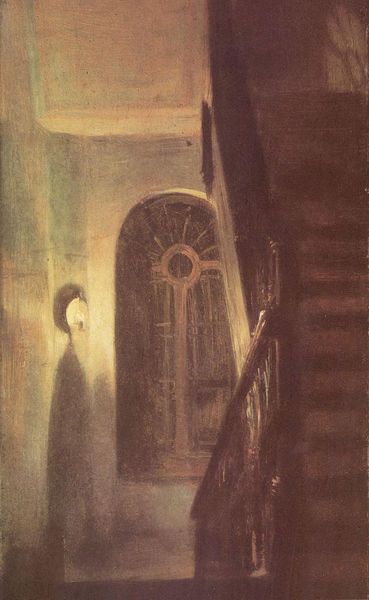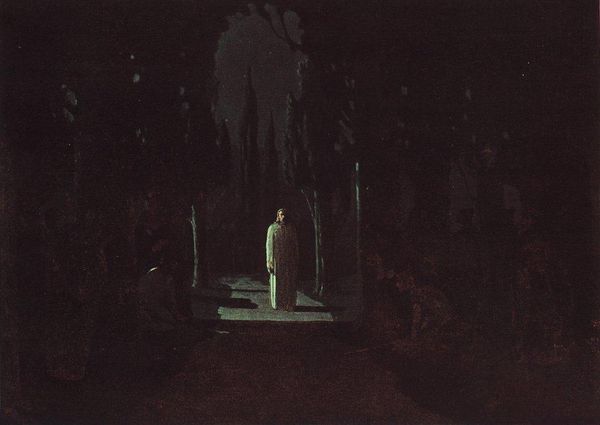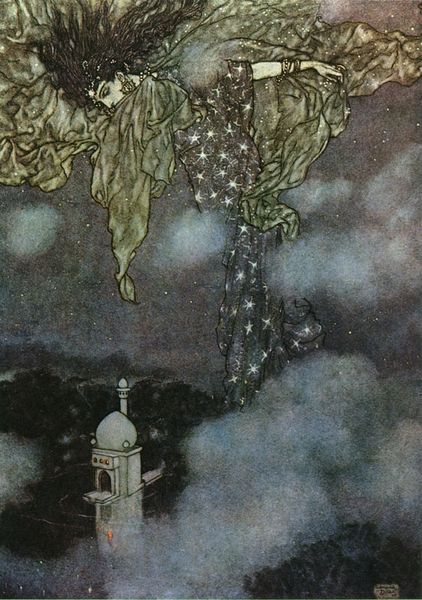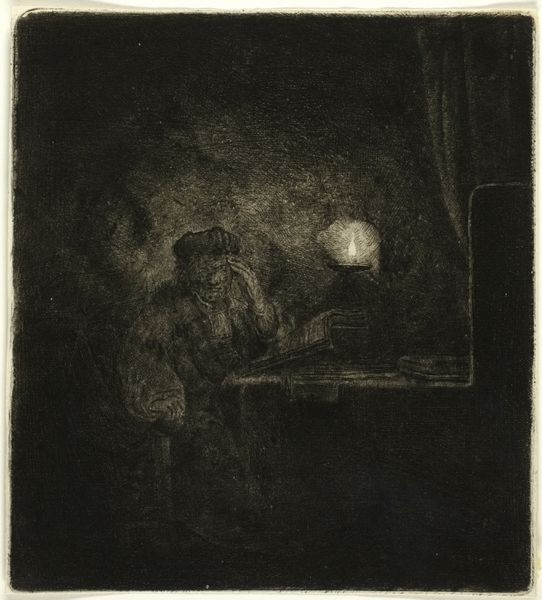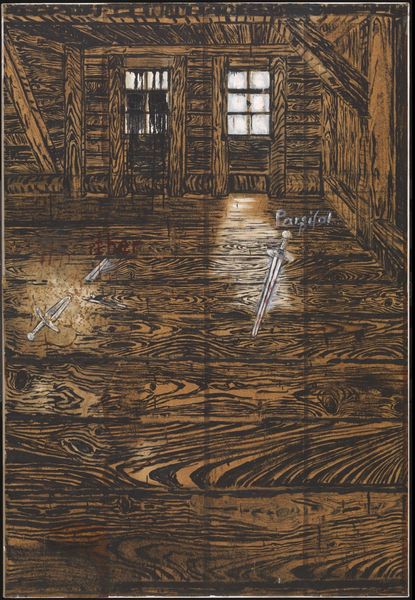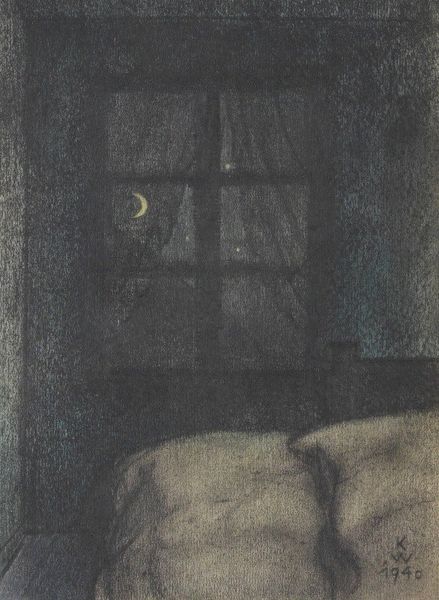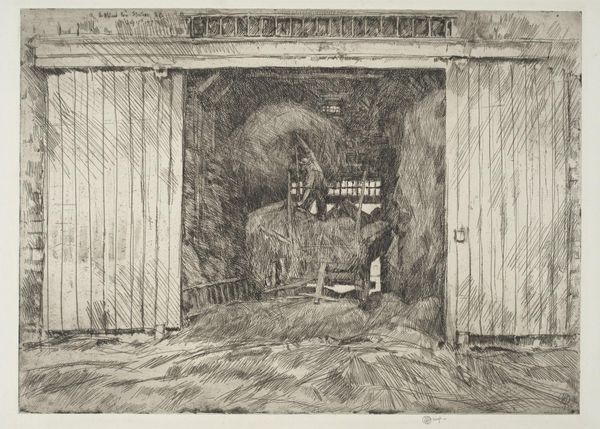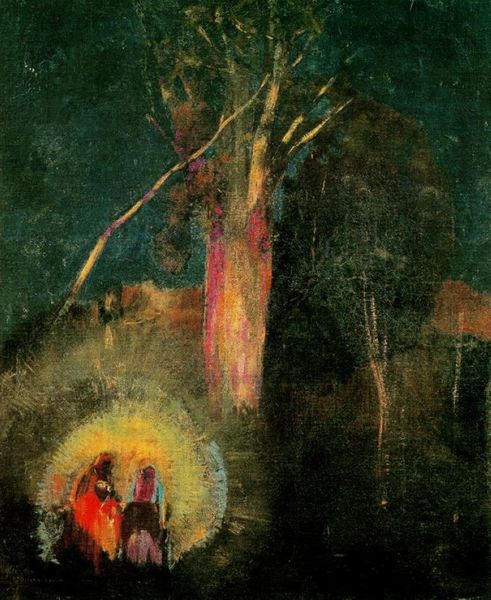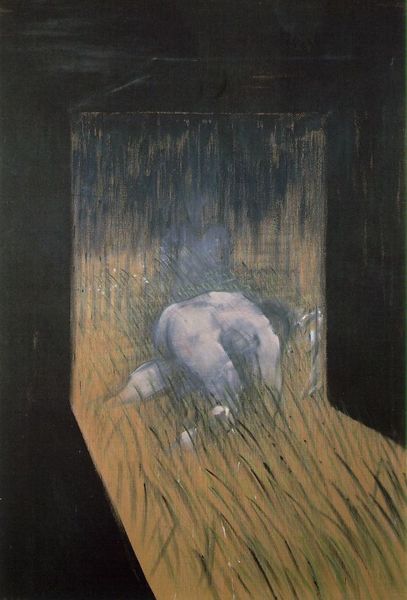
Copyright: Endre Balint,Fair Use
Endre Balint's "De profundis" presents a somber tableau, dominated by potent symbols. A pyramid, a shape resonant with ancient Egyptian beliefs in the afterlife, sits atop what appears to be a decorated tomb or altar. Beside it, a darkened goblet evokes images of libations offered to the departed or perhaps, a more modern symbol, the chalice of grief and loss. The pyramid, an emblem of stability, order, and spiritual aspiration, can be found repeated in alchemical diagrams, or even the architecture of modern banks, subtly hinting at the promise of everlasting stability. Yet, its presence here, coupled with the funereal tones, brings to mind not triumph but a poignant meditation on mortality. The scene stirs deep within our collective memory. We are reminded that symbols possess a life of their own, continually resurfacing, evolving, and engaging us in an endless dialogue across the ages. Balint invites us to contemplate the cyclical nature of existence itself.
Comments
No comments
Be the first to comment and join the conversation on the ultimate creative platform.
